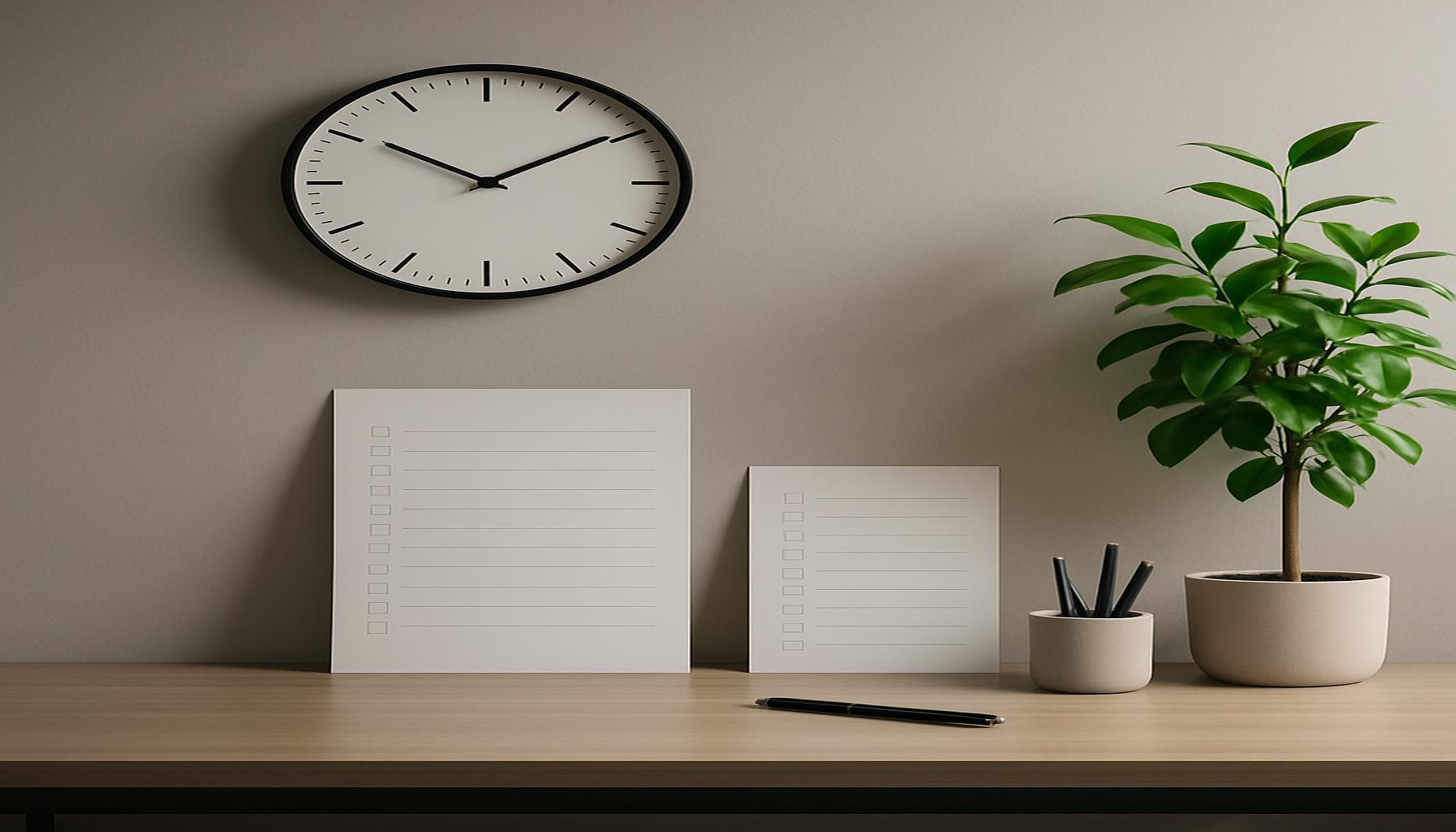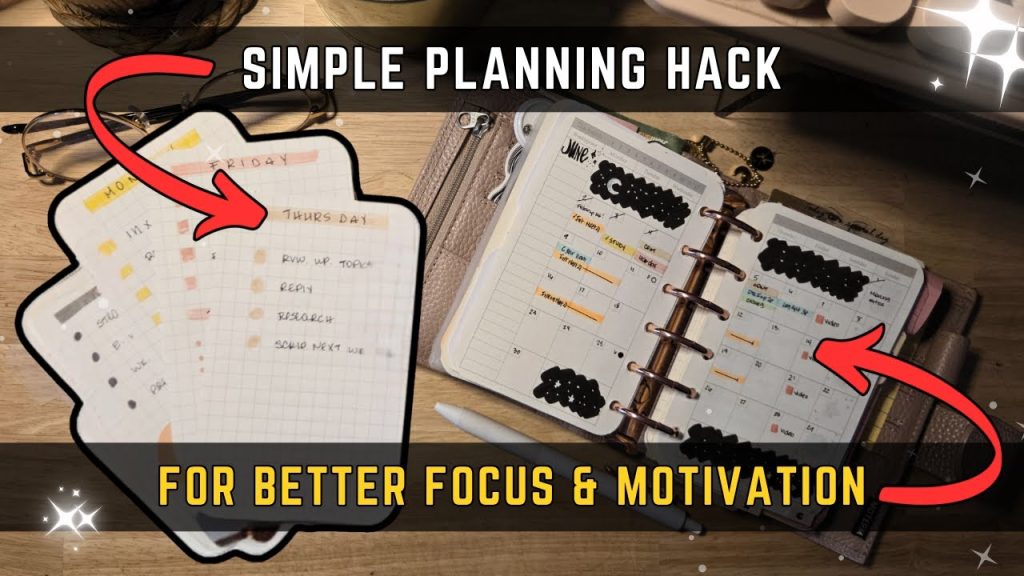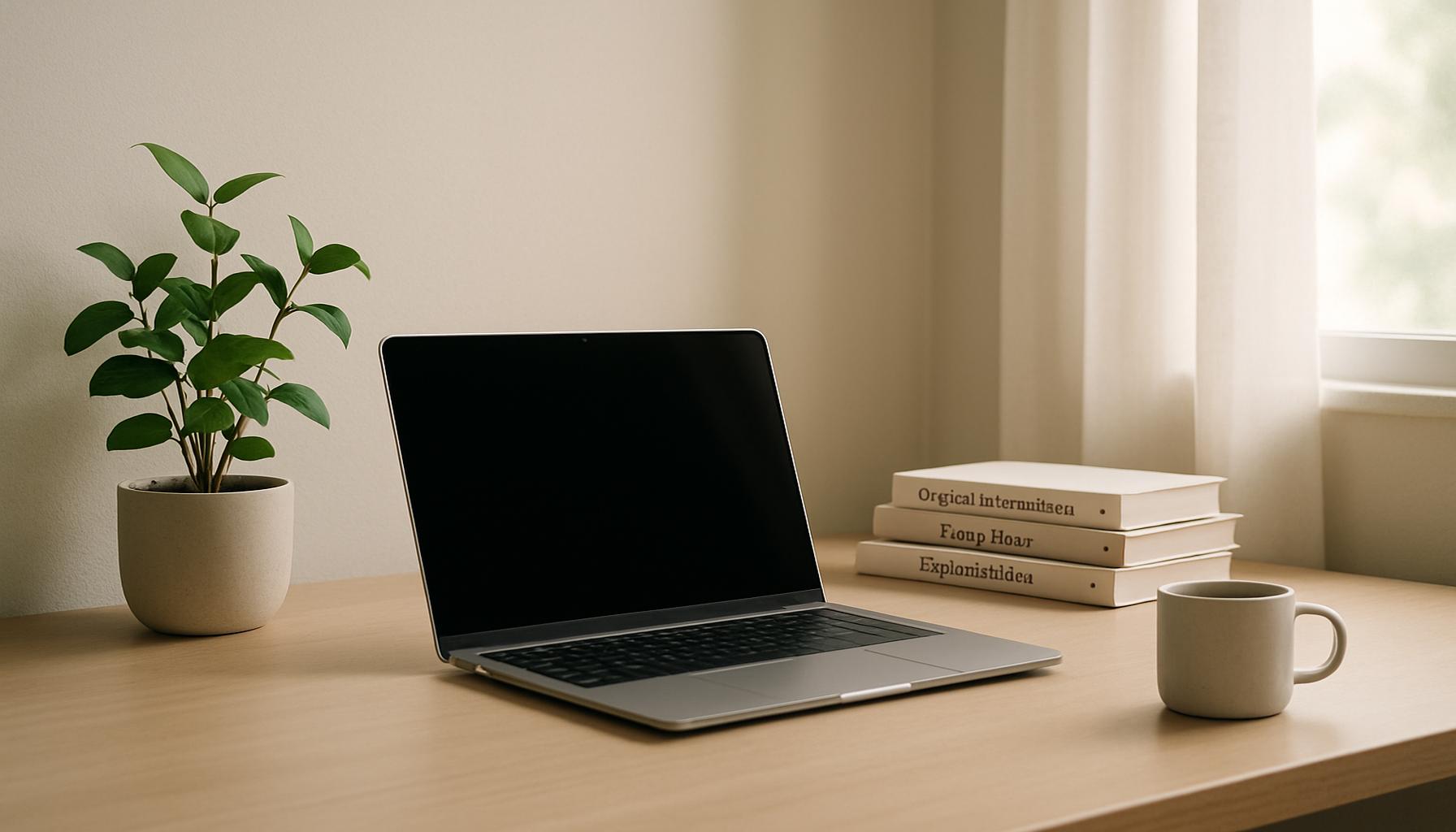Minimalism and Time Management: Strategies to Prioritize Tasks and Maintain Focus

Understanding Minimalism in Time Management
In the relentless pace of modern life, distractions are as common as the air we breathe. Between buzzing smartphones, overflowing email inboxes, and the demands of family and work, it’s easy to feel overwhelmed. This is where minimalism serves as a guiding light, allowing individuals to reclaim their time and energy by focusing solely on what is essential. This philosophy is not merely about decluttering physical spaces; rather, it encapsulates a holistic approach to living a meaningful and organized life.
To truly embrace minimalism, one should start by identifying core values. This process involves reflecting on what aspects of life bring genuine joy and fulfillment, whether it’s nurturing relationships, pursuing a career passion, or engaging in health and wellness. For instance, someone who values family might prioritize weekend activities that foster bonding over attending numerous social events. By honing in on these personal values, individuals can tailor their time management strategies accordingly.
Next comes the assessment of tasks that align with these identified values. Often, people find themselves knee-deep in activities that do not contribute to their long-term goals, resulting in wasted time and energy. To illustrate, consider someone heavily involved in too many volunteer activities. While these commitments can foster community engagement, if they detract from personal growth or family time, it may be time to reevaluate and reduce participation.
This brings us to the concept of streamlining daily responsibilities. One practical strategy is adopting “time blocking,” a technique that allows individuals to create a structured schedule focused solely on prioritized activities. By blocking out specific periods dedicated to high-value tasks, distractions are minimized, placing emphasis on what truly matters. Tools like digital calendars can be utilized effectively here, offering reminders and alerts that reinforce focus during designated work times.
The Impact of Minimalism on Mental Well-being
The marriage of minimalism and effective time management provides profound benefits. Firstly, those who practice this approach often experience an increased focus on key priorities, allowing them to allocate their limited time and resources on what counts. This shift not only enhances productivity but also creates a sense of accomplishment and purpose.

Moreover, by intentionally reducing commitments, individuals can experience a significant reduction in stress from overwhelming commitments. Imagine a scenario where a person opts to say “no” to several obligations, thus freeing up mental space and fostering a more balanced and serene lifestyle.
Finally, enhanced overall clarity and mental well-being can be a direct result of minimalistic principles. When distractions are minimized, individuals often report clearer thinking, better decision-making, and an improved ability to handle challenges. By fostering a mindset that values simplicity and intentionality, people can create environments—both physical and mental—that support their aspirations.
In conclusion, minimalism, when harmonized with strategic time management techniques, can significantly enrich lives. It invites individuals to actively shape their daily experiences, making room for meaningful pursuits amidst the chaos of everyday life. Through these strategies, one can cultivate a lifestyle that is not just about doing less, but rather about embracing more of what genuinely resonates.
DISCOVER MORE: Click here to simplify your digital space
Decluttering Your Schedule: The Essentials of Task Prioritization
To effectively combine the principles of minimalism with time management, one must first understand the significance of task prioritization. In essence, prioritizing tasks helps to distinguish between what is urgent and what is important, allowing individuals to allocate their efforts where they will yield the highest returns. This process is vital, especially in an era where the abundance of options can lead to decision fatigue.
One of the first steps in simplifying your schedule is to utilize a priority matrix, often referred to as the Eisenhower Box. This tool categorizes tasks into four quadrants:
- Urgent and Important: Tasks that need immediate attention, such as work deadlines or family emergencies.
- Important but Not Urgent: Activities that contribute to long-term goals, such as exercising or learning a new skill.
- Urgent but Not Important: These tasks may feel pressing, like responding to some emails, but do not significantly impact personal objectives.
- Not Urgent and Not Important: Activities that can often be eliminated or delegated, like excessive social media browsing.
By placing tasks into these categories, individuals can gain clarity on how to spend their time effectively. The goal is to spend less time on tasks that fall into the latter two quadrants, thus fostering a more focused and fulfilling daily routine. But how do we go about executing this prioritization?
Employing the practice of regular task audits can be incredibly beneficial. At the end of each week, take time to review what tasks consumed most of your schedule. Ask yourself critical questions:
- Did I accomplish my most important tasks?
- Were there tasks that took up too much time without adding value?
- What can I delegate or eliminate for next week?
These reflections enable a continuous improvement cycle that marries minimalism with effective time management. It encourages individuals to consciously assess their commitments and identify which ones are amplifying their focus and which are merely occupying space.
Embracing Intentionality in Everyday Choices
Incorporating minimalism into time management also calls for intentionality in decision-making. This means making deliberate choices about how you spend your time, which can lead to improvements in both productivity and overall satisfaction. For instance, instead of creating lengthy to-do lists that can often cause overwhelm, consider employing a daily highlight system. Choose one or two tasks that align with your core values as the primary focus for the day and commit to completing them. This shift from quantity to quality can enhance satisfaction and create a sense of peace in your daily life.
Ultimately, minimalism encourages the elimination of the non-essential, including the mental clutter that comes with overcommitment. By embracing these strategies of decluttering your schedule and prioritizing tasks, individuals can develop a more meaningful relationship with time management, allowing room for growth, relationships, and opportunities that resonate.
In the modern world, with an overwhelming number of tasks and distractions at our disposal, mastering minimalism as a tool for time management is not just beneficial; it is essential. The core of minimalism revolves around simplifying your life by eliminating the unnecessary, allowing you to focus on what truly matters. By adopting a minimalist approach, you can streamline your tasks and priorities, leading to improved efficiency and enhanced productivity.
One effective strategy is the Pomodoro Technique, which involves breaking your work into intervals, traditionally 25 minutes long, separated by short breaks. This method not only helps maintain your focus but also minimizes the mental fatigue often associated with prolonged tasks. Acknowledging the limited time you have forces you to prioritize what is truly significant.
Moreover, implementing goal-setting frameworks like SMART (Specific, Measurable, Achievable, Relevant, Time-bound) can guide your task prioritization. By defining clear and realistic objectives, you stay committed to your immediate tasks, reducing the chances of distraction. Utilizing tools such as digital planners can further aid in visualizing your priorities, freeing your mind from the clutter of remembering numerous tasks.
Another key aspect involves creating a dedicated workspace that embodies minimalism. By decluttering your physical environment, you reduce distractions and enhance your ability to concentrate. A clean and organized space not only boosts mental clarity but also fosters creativity. You are more likely to maintain focus on your tasks when you are not surrounded by excessive stimuli.
Furthermore, integrating daily mindfulness practices can significantly improve your ability to focus and manage your time effectively. Techniques such as meditation, deep-breathing exercises, and even simple moments of reflection at the start of your day can help you recalibrate your intentions and priorities. This proactive approach reinforces your commitment to your objectives and reduces anxiety related to time constraints.
Lastly, consider employing the two-minute rule: if a task will take two minutes or less, do it immediately instead of postponing it. This method keeps your to-do list shorter, helps build momentum, and frees up mental capacity for more complex tasks that require deeper focus and engagement.
To discover more strategies on how you can harness the principles of minimalism for better time management, explore the extensive resources available that delve into this intriguing partnership, offering insights that could transform your approach to productivity.
| Category | Key Features |
|---|---|
| Strategies for Minimalism | Streamlining tasks to focus on what matters |
| Increased Focus | Reduces distractions and enhances productivity |
DISCOVER MORE: Click here to enhance your focus
Leveraging Technology for Minimalist Time Management
In a world increasingly driven by technology, it’s essential to harness digital tools that align with minimalist time management strategies. While technology can lead to distractions, it can also be a powerful ally in prioritizing tasks and enhancing focus. By choosing the right applications and platforms, one can streamline efforts and foster a more organized approach to managing time.
One popular option is the use of task management apps, such as Todoist or Trello. These tools allow users to create custom lists that can be easily modified and prioritized, helping to visualize tasks more effectively. Moreover, features like reminders and deadlines can nudge users towards completing their ‘important but not urgent’ tasks, reducing procrastination. Integrating these apps into your daily routine can transform your approach to time management, as they not only declutter your task lists but also enable regular review and reflection on your progress.
Another great strategy involves the integration of time-blocking techniques with digital calendars, such as Google Calendar. Time blocking involves allocating specific time slots to various tasks throughout your day. This method limits the hours available for distractions, discouraging multitasking. For example, by earmarking 9 AM to 11 AM specifically for deep work, you ensure that the most critical tasks receive your undivided attention, promoting an enhanced state of concentration.
Setting Boundaries: The Role of Minimalism in Digital Consumption
Minimalism also extends beyond physical space into our digital environments. Reducing digital noise—like notifications from unnecessary apps or excessive email subscriptions—can significantly improve focus. Establishing clear boundaries involves crafting a technology usage policy. This could mean disabling notifications for non-essential applications or setting designated times to check emails and social media, thus protecting valuable cognitive resources from being drained by interruptions.
A recent study from the American Psychological Association indicates that frequent interruptions can decrease productivity by as much as 40%. Therefore, creating a digital environment that mirrors minimalist principles—focusing on what’s truly essential—encourages deeper engagement with tasks at hand.
- Identify Key Applications: Assess which tools genuinely support your work. Eliminate those that serve more as distractions than as aids.
- Perform Digital Decluttering: Review your inbox and unsubscribe from mailing lists that no longer serve you, just as you would declutter physical items.
- Schedule Technology-Free Time: Allocate periods throughout your day to unplug from digital devices. This time can be used for mindful activities, such as reading or taking a walk, promoting mental clarity.
Lastly, it’s essential to recognize the value of mindfulness practices in supporting minimalist time management. Incorporating techniques like meditation or focused breathing exercises can help cultivate presence, reducing the urge to succumb to distractions. Studies show that practicing mindfulness leads to improved concentration and cognitive flexibility, further enhancing one’s ability to prioritize effectively.
As you adopt these strategies into your daily routine, remember that minimalism in time management is about creating a framework that promotes effective decision-making, mindful choices, and a commitment to engaging with tasks that resonate with your core values. This not only supports productivity but also enhances overall life satisfaction, flipping the burden of time management into an exquisite form of self-care.
DISCOVER MORE: Click here to learn how decluttering can boost your well-being
Conclusion: Embracing Minimalism for Enhanced Time Management
In the relentless pace of modern life, where distractions lurk at every corner, adopting a minimalist approach to time management becomes essential for maintaining focus and enhancing productivity. By integrating the principles of minimalism into our daily routines, we can create an environment that nurtures clarity and purpose, allowing us to prioritize effectively and engage deeply with our tasks.
Implementing strategies such as digital decluttering, task management applications, and time-blocking not only helps us establish boundaries but also fosters a mindset geared towards intentionality. Emphasizing mindfulness practices further cultivates the ability to remain present, facilitating a connection with our essential tasks while reducing susceptibility to external distractions. A holistic blend of these strategies can transform our relationship with time, enabling us to seize opportunities rather than succumb to chaos.
As we navigate our increasingly complex lives, remember that minimalism in time management is not merely about reducing the number of tasks on our lists. It’s about embracing a philosophy that prioritizes what truly matters—aligning our daily actions with our core values and long-term goals. By harnessing these insights, we can create a more purposeful existence that not only boosts productivity but also enriches our overall well-being.
Ultimately, the journey toward effective time management through minimalism is an ongoing process, one that calls for regular evaluation and adjustment. As you explore these strategies, reflect on what resonates most with you, and let the principles of minimalism guide your choices in creating a life defined by focus, simplicity, and fulfillment.


